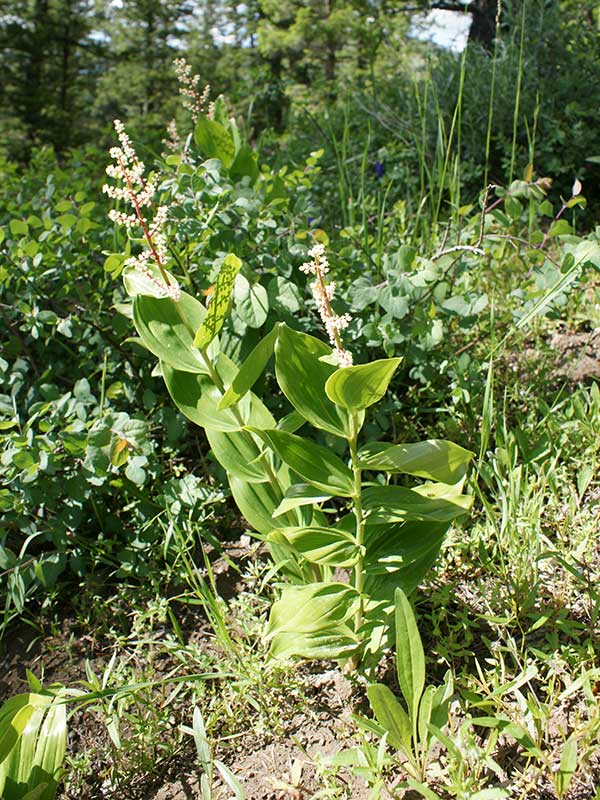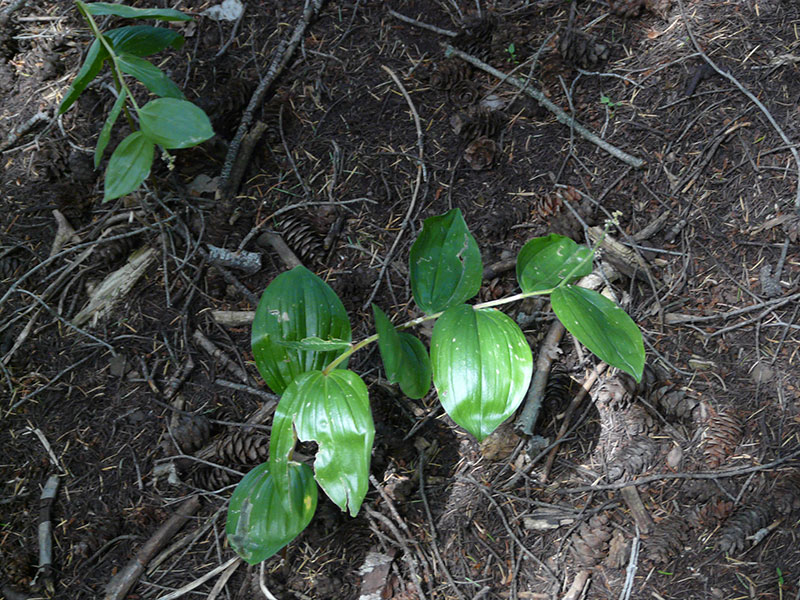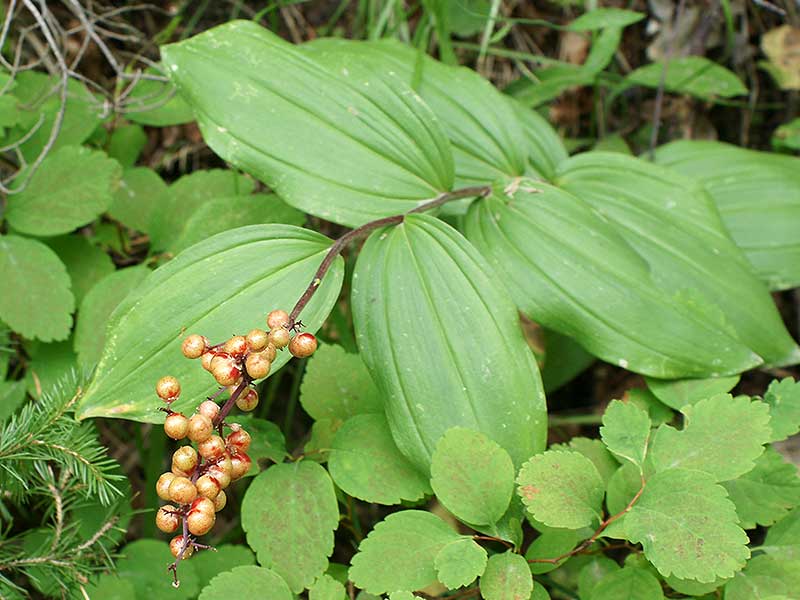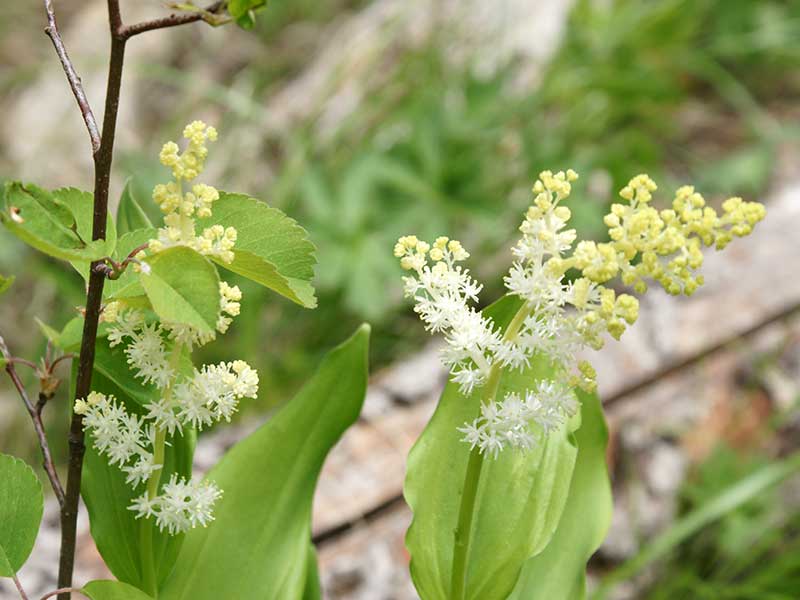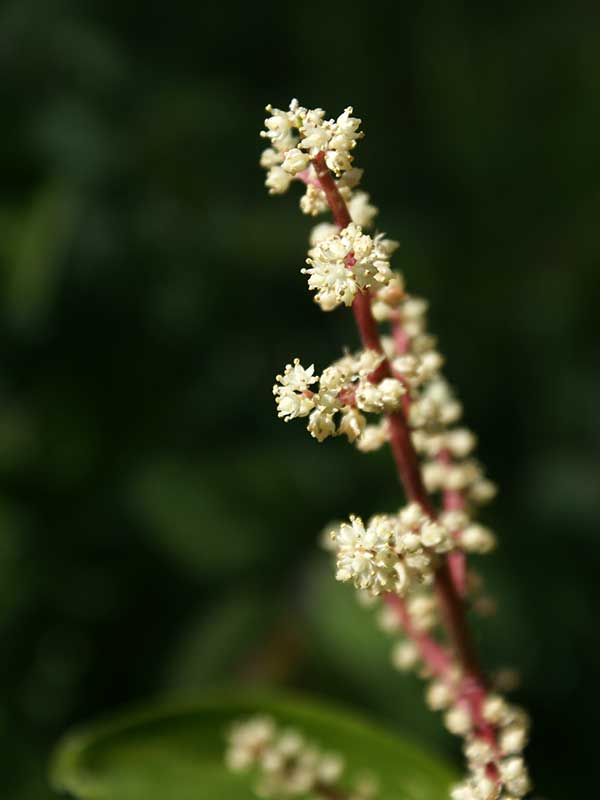Maianthemum racemosum / Solomon’s plume
- “feathery” inflorescence – panicle
- 6 white tepals on teeny flowers
- long-blooming in late spring, sometimes into summer
- green berries –> red as they ripen
- alternate, clasping leaves on erect stems
Synonym: Smilacina racemosa
Also known as: false Solomon’s seal, feathery false lily of the valley, treacleberry, western false Solomon’s seal
See also: Maianthemum stellatum / starry false Solomon’s seal
Solomon’s plume is a false Solomon’s seal with an inflorescence that looks more feathery than others such as the starry false Solomon’s seal. Rather than being a simple raceme, the inflorescence of Solomon’s plume is a panicle, i.e. a collection of racemes. Each flower has 6 white tepals. This species is long-blooming in late spring, with some flowering on into the summer. There appear to be only two species of false Solomon’s seal in the area, so the inflorescence type and the blooming dates are a first and easy way to distinguish them.
Solomon’s plume, like other false Solomon’s seals, has green berries turning red by late summer. The leaves of M. racemosum are alternate and in the subspecies found in the west (and hence, in the Valley), the leaves are sessile and clasping. The stem is erect rather than leaning to one side (as in M. stellatum).
M. racemosa is a woodland herbaceous perennial, spreading by rhizomes. It is typically found in partial shade and deep, moist, soft soils, e.g. in a shaded corridor or riparian zone.
Although this species is edible (with caveats), young plants resemble the false hellebore which is quite poisonous. Be careful and look elsewhere for details before harvesting.
Along with the reassignment of the Latin name from the genus Smilacina to Maianthemum, the family association of this plant was also changed from Liliaceae –> Ruscaceae. Like M. stellatum, it seems to have been further changed to Asperagaceae.
| Color | |
|---|---|
| Family | |
| Blossom size | |
| Inflorescence size | |
| Inflorescence type | |
| When? | |
| Where? |
